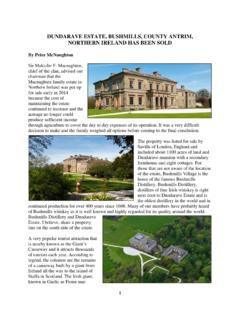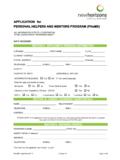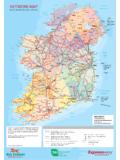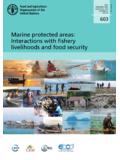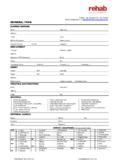Transcription of War Cry – Fraoch Eilean - Clan Macnachtan
1 War Cry Fraoch Eilean By Alasdair McNaughton Historian - CMAW Of the several castles occupied by the chiefs of the clan Fraoch Eilean , Dubh Loch, and Dundarave it was perhaps the first that was most important to the clan. The awarding of the custodianship of the castle of Fraoch Eilean to the chiefs was among the first documented records of the clan and their future importance in the area. It said they had arrived . It was important enough to be adopted as the war-cry of the clan. The history of the castle has been well-documented elsewhere, but one mystery perhaps remains. Why is the island and so the castle so named? Among others, Lord Archibald Campbell of the line of the Dukes of Argyll wrote that the translation of name of the island was, indeed, the island of Fraoch but since his time the commonly accepted belief for many years has been that it simply, and prosaically, means the heathery isle.
2 This view has been recently challenged by members of the Association. In 1769, the castle was passed by Thomas Pennant on his tour of Scotland. He wrote On Fraoch -Elan, the Hesperides of the Highlands, are the ruins of a castle . The name links it with an ancient Celtic legend popular in, and associated with places throughout, Scotland and Ireland. The legend is that of the warrior Fraoch and the dragon that protects an island with magical fruit - the Hesperides of the Highlands. The legend was first written down in the Tain Bo Fraich (the Driving of the Cattle of Fraoch ). The earliest extant manuscript dates from the 12th century. The Scottish version became well known from the 16th century when it was included in the collection of Gaelic poetry the Book of the Dean of Lismore by Sir James MacGregor. Like so many Gaelic legends, the tale is a dark one of love, hate, jealousy, and death. In short, Medb is jealous of Fraoch s love for Find-abair of Cruachan.
3 Feigning illness, Medb - consumed with resentment and unrequited love asks Fraoch to bring her the magical rowan tree whose fruit can not only satisfy hunger but also prolong life and bring health. Fraoch succeeds in killing the dragon, but succumbs to his wounds. Find-abair sings a lament and dies from a broken heart. The two lovers are buried together and a cairn is raised over them. It has been written by various experts on 1 Celtic legend how an Irish tale has been attached Cruachan in Roscommon in Ireland has been confused with Ben Cruachan. There are other lochs and islands in Scotland associated with the legend Loch Avich (near Loch Awe), Loch na Lathaich on the Isle of Mull, and Loch Freuchie near Amulree in Perthshire. It is the last of these that is the most intriguing. It is accepted by many that the original heartland of the clan was in Breadalbane the area centred on the mountains that overlook Loch Tay before they were transplanted to Argyll.
4 Loch Freuchie is a few miles over the hills from Kenmore. Is it possible that the clan took the story with them when they went to Argyll? That, to them, Loch Freuchie was the original site of the events of the legend as far as they were concerned and they took the legend with them and transferred the events to their new location? If so, perhaps there was some importance to the clan in the story. Interestingly, James MacGregor, the Dean of Lismore, was a member of a Perthshire clan, and was closely associated with Fortingall. Fortingall is not too far to the north of Loch Freuchie But what of the prosaic translation of the name: the heathery isle ? Could it be just that? It is true that the Highlanders did give prosaic names to features of their landscape. The number of Ben Mores is testament to that. Big hill , round hill , peak , brown hill etc. are all common. However, the Gaels were also fond of using more poetical names.
5 Among others, we have the great herdsman of Etive and the hill of the clattering burn. There are eight small islands in the northern part of Loch Awe. Fraoch Eilean is just one. Place name features are used to distinguish places and features in the landscape. This is their sole purpose. Is this island so heathery that this quality could, and would, be used in order to distinguish it from its neighbours? A close by neighbour, Innishail, has a name which means island of beauty . It is hard to believe that the people naming that island would give a more prosaic name to one close by. Can we ever know the truth of the name? No. However, we can look at it in a different way. Would we as a clan prefer it as heathery isle or island of Fraoch ? I know which speaks more to me. 2

